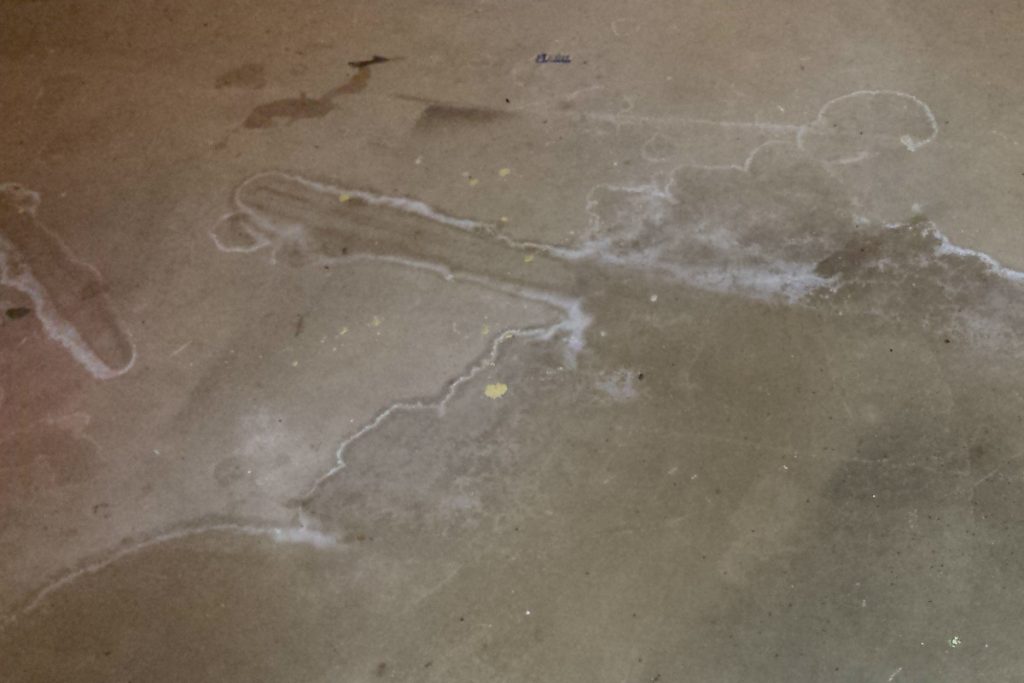When you discover that you have a basement leak; if you have a cinder block foundation, it is likely that there are cracks in your cinder block foundation that are letting water leak through your foundation walls. Below is an excellent example of what a cracked cinder block foundation looks like, from inside a basement.
Introduction to Cracks in Cinder Block Foundations
By looking closely at the image above you will notice that there is a vertical crack within a foot of the corner of this cinder block wall. This particular crack is probably the result of expanding ice having applied a tremendous amount of pressure on the foundation. As a result, there is cracking in the mortar joints and cracking of the cinder blocks themselves. Clearly, tremendous pressure has been applied to this foundation, and the cracking has allowed a significant amount of water to pool in the cinder block walls. The visible dark gray staining and efflorescence provide ample evidence of the saturation of the cinder blocks caused by the pooling of water within the block walls.
Types of Cracks in Cinder Block Foundations
The most common type of crack in a cinder block foundation is the mortar joint crack. Mortar joint cracking usually results from the thermal cycling (alternating heating and cooling) of the mortar and the blocks. This type of cracking in cinder block foundations is the most common type of cracking and is responsible for the majority of basement leaks. The significance of this type of foundation cracking is beyond the scope of this blog.
The second type of cracking in a cinder block foundation is cracking of the cinder blocks themselves. This type of cracking may or may not be serious; it is not possible to evaluate these cracks without an on-site inspection by a knowledgeable waterproofing contractor or a civil engineer. Cracked cinder block foundation walls can be stabilized if the cracking is not too significant; otherwise, structural repairs are needed.
There are times when foundation cracks are serious, specifically horizontal cracks. These cracks are caused by the soil pushing the foundation wall inwards. There is a way to stabilize a foundation wall before it bows excessively or the foundation fails.
